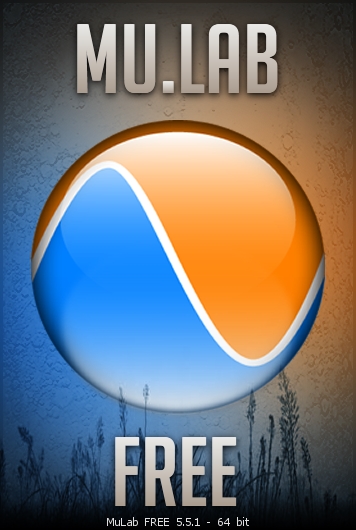

It can also be used to copy-paste VST parameter values even in VST editors that don't support such functionality. It can also be used to monitor the value of VST parameters for VST's that don't show this in their editor. You can easily create automation tracks for VST parameters by drag-dropping this focused parameter editor onto the track button. Right-click the parameter for handy functions like Copy As Parameter Event or Copy As Envelope Point. This focused parameter editor is a handy bridge between any VST parameter and the MuLab / MUX user interface. VST editors now can have a focused parameter editor in their top control bar. New Piano Keyboard, Note Event Pad and Audio Level Meter modules. It now includes a customizable curve display, which also makes it visually more clear how the distortion works. The TanH Distortion module has been expanded to a much more flexible "Amp. Another advantage is that you can now directly use an extra VST plug-in layer for this drum pad without having to go via a MUX Modular. This results in a more simple and comfortable layout where the two sampler displays have more space now. Improved MuDrum layout: Element 3 has been minimized so it only contains a display where you can choose the extra plug-in module for this drum pad. The Audio Limiter now also has an Input Gain parameter and input and output level meters. This is more suited for general mixing use. In other words there always is some degree of dynamism preserved. In Soft Mode the audio level is limited more in a soft way so that even for high audio levels there still is a difference in output level. Previous versions always worked in Hard Mode which in the end really clips the audio. Added an extra mode to the Audio Limiter module: Now it can work in Hard Mode and Soft Mode. The oscilloscope also includes a sync mode which allows to display dynamic synth waveforms. This avoids confusing situations that could occur with the previous behaviour of fully hidden sub-tracks. Collapsed sub-tracks are always shown, be it very minimal. The MUX front panels are the bridge between MUX' deep modular world and the effective use of synth and effect presets while creating music.ĭifferent track heights are also preserved while zooming in and out or calling vertical overview. Einschränkung mit Gebrauch von Synthesizer: spielt auf jeder Taste, kein key mapping möglich.-Reworked MUX front panel construction system.įront panel components can now be layered and moved together and many more supported component types.> edit focus midi map to force rack 1 (in menu "edit") > insert "send" to next rack BEFORE sound generating instance in rack (this sends midi events, otherwise it would send audio)

need for using several racks: independent controls / different version of same sample, etc.Possibility to send audio to other channels (send instance in rack, after an audio generator).Use mapping overview (in menu "edit") for overview.Plug effects after sound generators, and map controllers in the same fashion as for multisampla.if you want to ensure a sound gets played always at the same volume, regardless of key press velocity: go to mutlisampler > amplifier > adjust "velocity sensitivity" to 0%.to create a smooth fadeout at the end of a loop) there are also LFO and envelope generators in MultiSampla, e.g.transpose): Right-click on interface (knob, slider) and select "map controller"


 0 kommentar(er)
0 kommentar(er)
